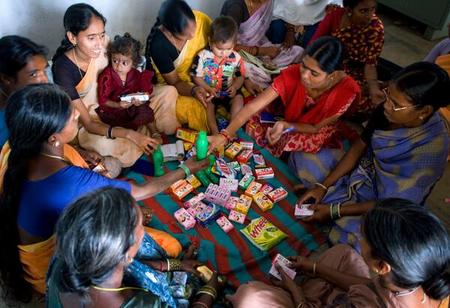
Shakti network to enhance rural growth of HUL

 Sneha Dwivedi, a ‘Shakti’ micro-entrepreneur with Hindustan Unilever (HUL), distributing soaps, detergents and sanitisers to households.she is among the practically 1.4 lakh Shakti ‘ammas’ as the women entrepreneurs are called across 18 states roofed by HUL’s Project Shakti. A pastoral allocation network of HUL, Shakti was set up to develop livelihood and put up opportunities for women micro-entrepreneurs in the neighbourhood.
Sneha Dwivedi, a ‘Shakti’ micro-entrepreneur with Hindustan Unilever (HUL), distributing soaps, detergents and sanitisers to households.she is among the practically 1.4 lakh Shakti ‘ammas’ as the women entrepreneurs are called across 18 states roofed by HUL’s Project Shakti. A pastoral allocation network of HUL, Shakti was set up to develop livelihood and put up opportunities for women micro-entrepreneurs in the neighbourhood.Sneha states, “Following the outbreak of Covid, in the beginning there were many hurdles in getting products across to households. At the same time, there was a demand for hand washes, detergents and sanitisers all of which are required for hygiene and safety. My father travelled to nearby villages to distribute these products, while I ensured that the houses in our village were well stocked.”
HUL’s Shakti network currently covers half the villages in rural India, as compared to only 25 percent four years ago. Network has doubled during these years. In 2020, when logistics got disrupted, Shakti project came to rescue HUL. Hard work put in by the women entrepreneurs in noticeably stepping up physical reach of products to countryside households is a key reason why these markets remained fairly resilient as compared to urban.
HUL executive director (sales & customer development) Srinandan Sundaram states, “Shakti has got the scale and is now part of our mainstream business. During Covid, this channel led growth for us. There were enough instances of Shakti entrepreneurs travelling to distributors to pick up stocks and come back to distribute to the households in their vicinity. This dramatically stepped up physical reach of our products, making them available to possibly the most vulnerable sections of society.”
Sundaram adds, “Shakti’s contribution to the turnover has moved up and it’s now sizeable. We grew faster in rural as the Shakti channel significantly outgrew overall HUL’s growth”
Shakti kind of model is rare comparing other FMCG companies in rural areas. But most are lacking out strategies to increase rural infiltration and are conniving products specifically for these markets. Procter & Gamble India is investing in increasing its reach in media-dark rural areas. Nestle India states it wants to reach around 1.2 lakh villages over a few years.
On the other side, unremitting focus by Marico to enlarge direct reach has enabled the company in developing a network of 6,200 stockists in the rural market. This is a growth of 30 percent since fiscal year 2019.
Shakti was recognized as a CSR activity and in 2019-20; HUL depleted 53 crore on the network. While 2020 was a hard year for almost all businesses and individuals in provisions of their incomes and salaries.
Sneha states, “Recognitions I earned last year was better than 2019. Reverse migration during the pandemic also helped rural markets grow ahead of urban. In 2019, the overall industry’s rural growth had dipped on account of the slowdown.